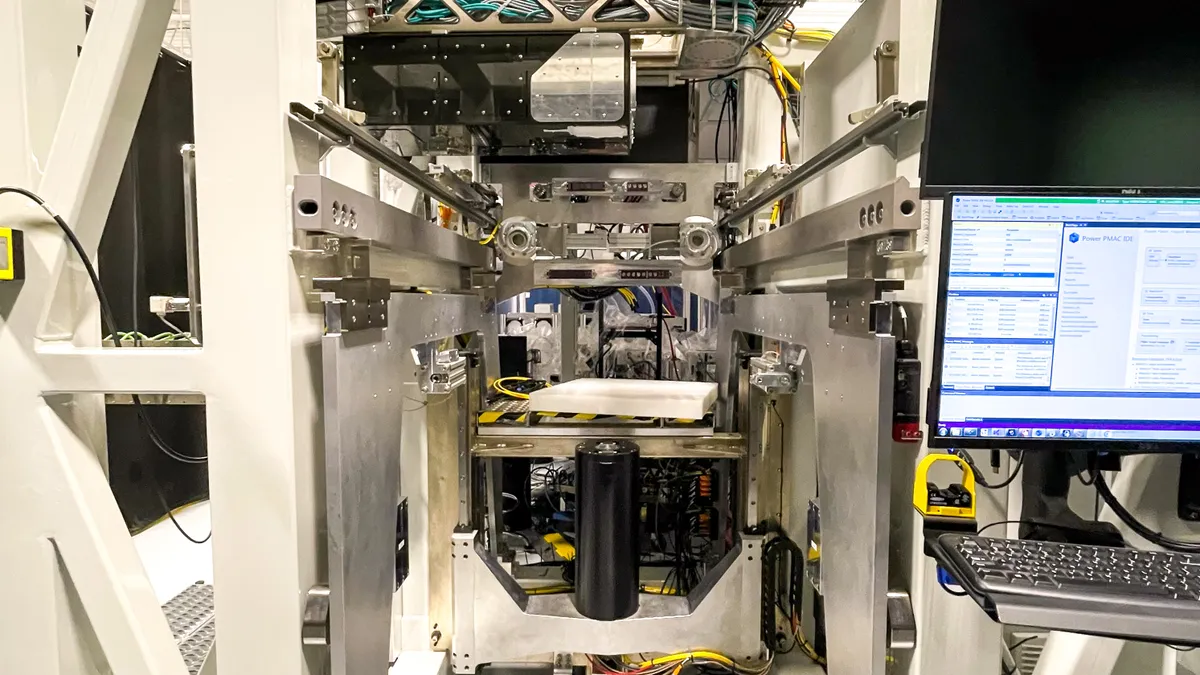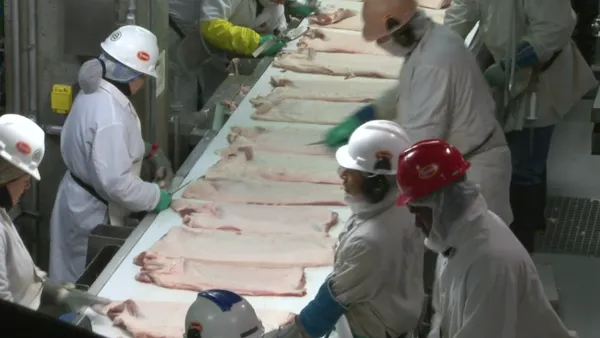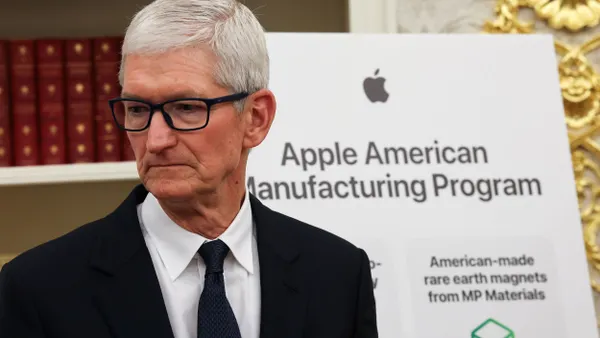Dive Brief:
- Siemens Energy is partnering with Massachusetts-based startup Seurat Technologies to produce 59 metric tons of metal parts for its gas turbines using additive manufacturing.
- Production will ramp up over six years, initially focusing on one group of turbine parts, with the option to increase volume to include other parts in the future, the startup said in an announcement.
- Seurat’s pilot factory has reached order capacity. The startup expects to complete a new full-scale factory with approximately 500 metric tons of production capacity by late 2025 to meet increased demand, co-founder and CEO James DeMuth told Manufacturing Dive.
Dive Insight:
Evolving the traditional additive manufacturing process of using laser powder bed fusion — in which a laser sweeps across thin layers of metal powder to gradually sinter a part — Seurat’s area printing technology has split the laser into multiple beams to process a larger surface area at once.
“It’s 40 times per second. I can’t even roll my R’s that fast,” DeMuth said.
Seurat is working to secure long-term agreements with major companies as it ramps up operations, helping position the startup for future growth, the CEO said.
With its area printing process, which has a higher throughput rate than typical additive processes, Seurat aims to push its technology to eventually be cost-competitive with traditional, more emissions-intensive manufacturing.
Siemens Energy is buying into the same goal. In addition to the supplier deal, the German energy company has invested in Seurat through its venture arm, Siemens Energy Ventures.
“We’re excited about our future printing high-quality parts with fantastic economies of scale to deliver cost savings,” Siemens Energy Head of Venture Building Enrique Gonzales Zanetich said in a statement. “We invested in Seurat Technologies and believe that strengthening our partnership could help to accelerate decarbonization in the industry at scale.”
Seurat has also applied for funding from the Department of Energy’s $6 billion initiative to help decarbonize industrial manufacturing, particularly for early stage commercial projects like theirs.
Current processes like machining work by cutting away material to get a desired shape, which, in general, means removing over half of the starting material. While the scrapped material can be melted down and reused, doing so is more energy intensive, DeMuth explained. Another process, casting, typically uses the cheapest form of energy — fossil fuels — to heat the metal and pour it into a mold, he added.
This is where additive manufacturing can offer “significant emissions savings,” DeMuth said. The process only uses the material that goes into the finished product, thus reducing material waste. It also opens up the design space for parts to be made lighter, which can lower emissions in the transportation and energy industries.
“You can take something like steel, and when you apply the right geometry to it, you can make it stiffer and lighter weight than carbon fiber, yet limitlessly recyclable,” DeMuth said. “We see this as an opportunity not just to reduce emissions but to make components that are ultimately lighter weight [and] more efficient.”
Correction: This story has been updated to reflect that metal parts will be used in Siemens Energy's gas turbines.













